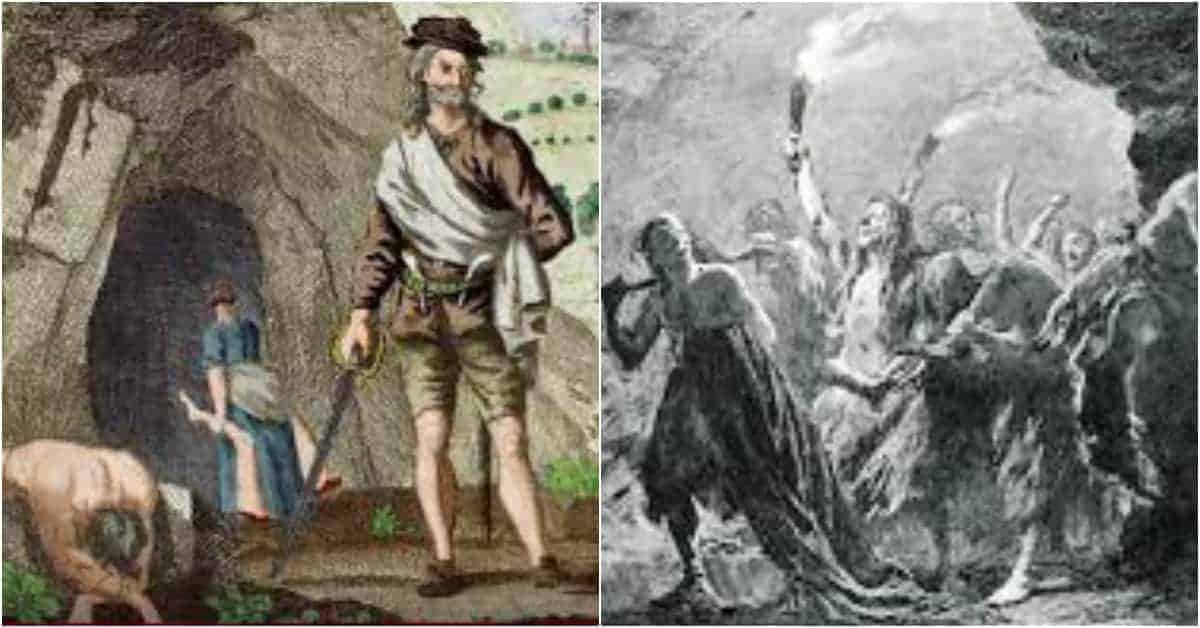If you ever happen to be in Bennane Head in Scotland’s Firth of Clyde, you may come across Bennane Cave. If the legend is to be believed, it was the home of one the most prolific cannibal clans in history. The cave was apparently where Alexander ‘Sawney’ Bean and his extended family lived and were their HQ when they reputedly attacked and murdered travelers before eating their remains back at the cave. In all, the clan supposedly claimed over 1,000 victims.
Of course, there are severe doubts about the veracity of this entire tale. It could be a complete work of fiction or a highly exaggerated version of a real Scottish cannibal who lived approximately 200 years earlier.
Who Was Alexander ‘Sawney’ Bean?
The entire legend of Sawney Bean began in an 18th-century publication known as The Newgate Calendar. According to the crime catalog, Bean was born in East Lothian, Scotland, during the first half of the 16th century. Other versions of the tale suggest he was born anywhere between the early 15th century and late 16th century.
In any case, Bean’s father was a ditcher and hedger, and while the family was known for its honesty and hard work, Bean was apparently uninterested in a life of manual labor. His father reportedly beat Bean regularly which may have been the reason why he ran away from home. Bean met a woman named Agnes Douglas while on his travels and the duo decided to shun society and live in Bennane Cave which is off the Ayrshire coast.

Sawney Bean’s Cave
As he had no job and no means of supporting his family, Bean began to ambush and rob travelers who walked the lonely roads between the villages in the area. Rather than risk his victims reporting him to the authorities, Bean decided to murder them and dragged their bodies back to the cave where he and Agnes would feast on them.
In reality, the cave was the ideal location for Bean to conduct his grisly carnival of murder and cannibalism. The cave consisted of tunnels almost half a mile long penetrating the solid rock. There were a large number of side passages that the couple could flee into should they ever be pursued by the police. To cap things off, the entrance to the cave was flooded twice a day at high tide. With no evidence to link him to any of the crimes, Bean was free to carry out his incredible murder spree.
The couple produced a total of eight sons and six daughters. Through incestuous relations, a total of 32 grandchildren were produced over the course of a couple of decades. At this stage, the clan consisted of 48 people. Bean’s sons followed in his footsteps and together, they continued to murder innocent travelers unfortunate enough to cross paths with the cannibalistic clan. Over the years, an estimated 1,000 people went missing, and as the clan was continuing to grow and hidden away in their secret cave, it seemed as if they could continue indefinitely.

